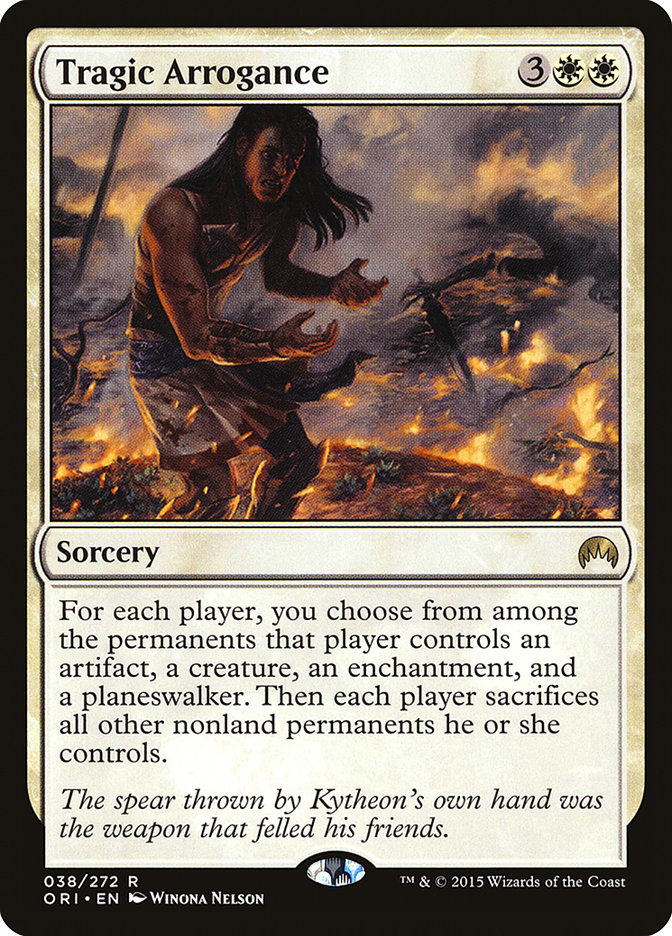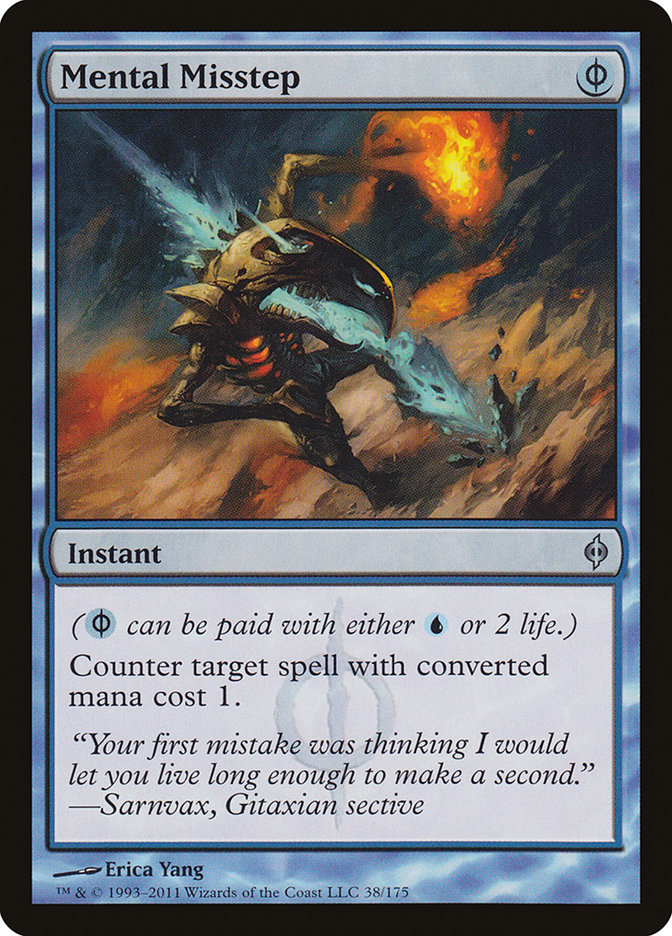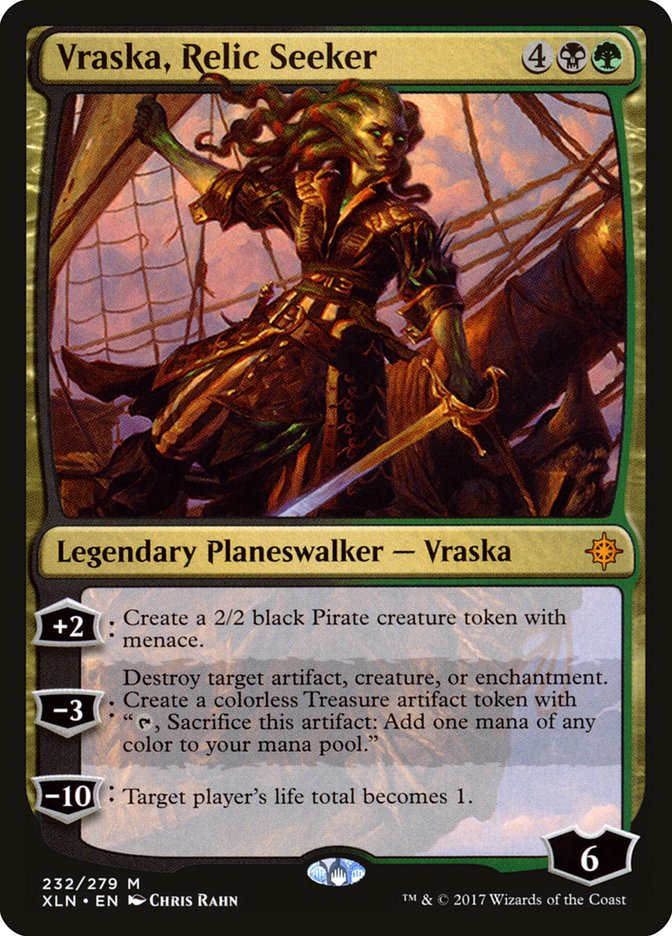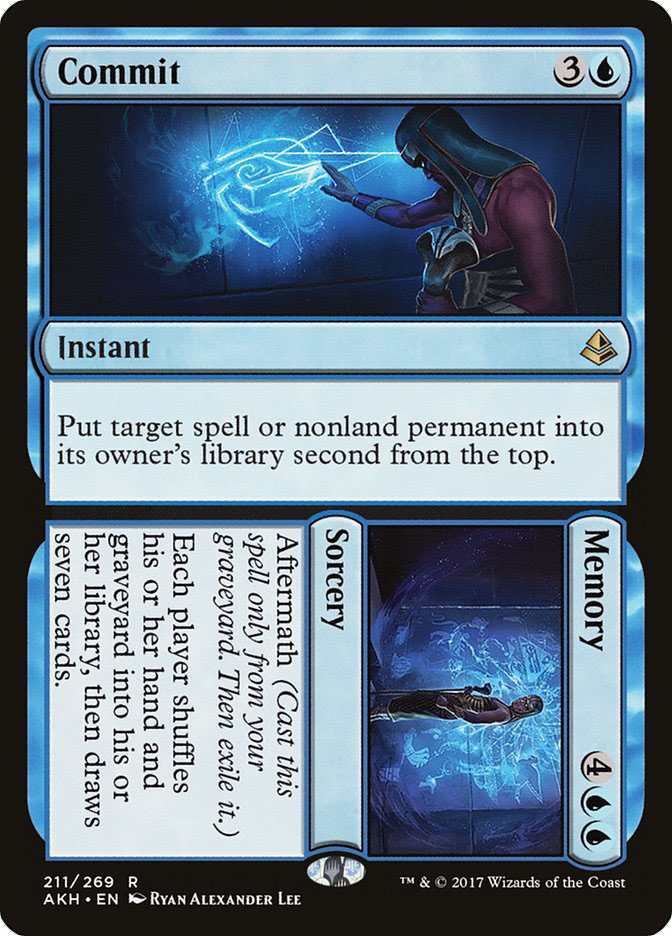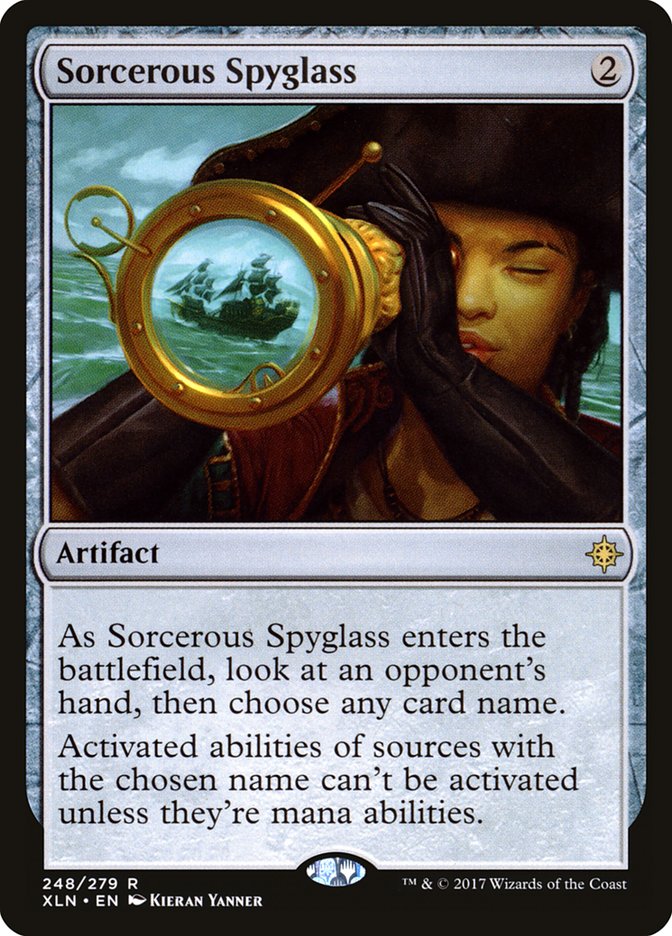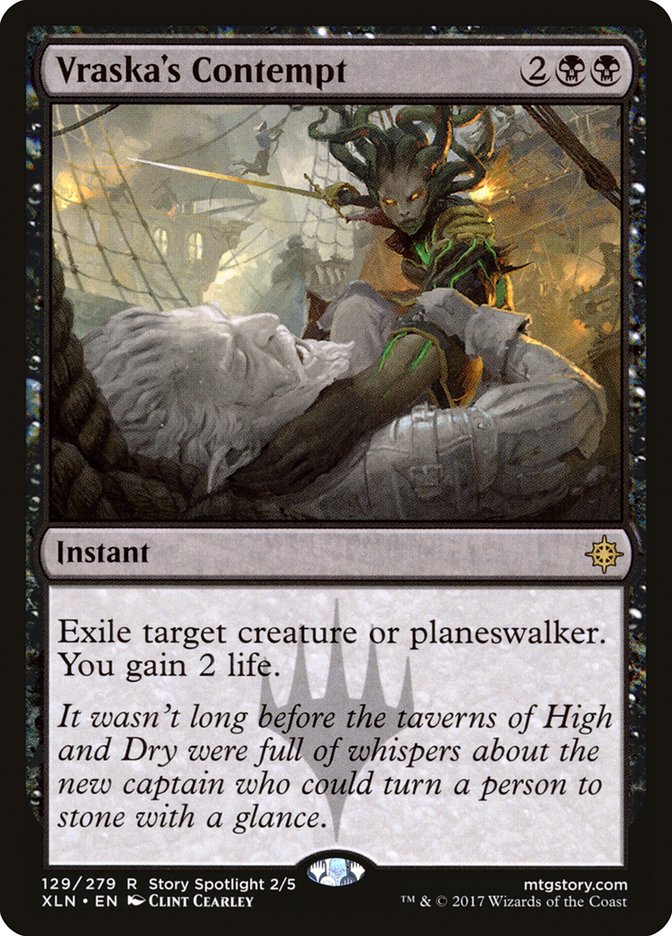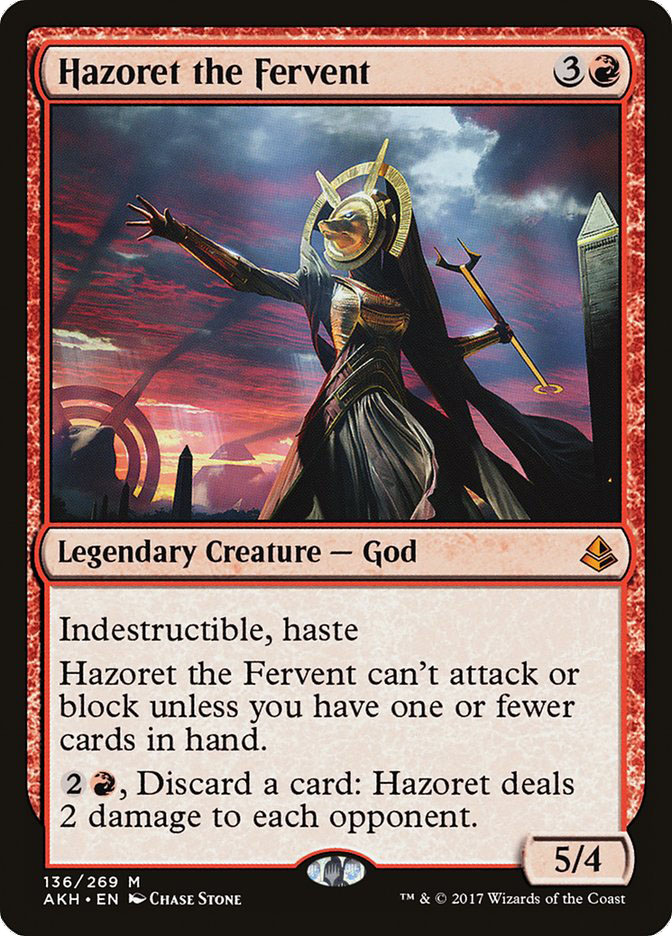You ever feel like you threw away a tournament?
I’m feeling this more and more as of late. I don’t know if it’s age, as I am getting up there. Could be hubris, but that doesn’t make too much sense either. I’m the best, after all.
It could just be an off day, but sometimes it just comes down to an off moment. One turn. That’s the difference between a Top 8 and just another missed opportunity.
That’s the story of today. There were many decisions leading up to final standings in Memphis, but only one that will haunt me for the foreseeable future. I just don’t know which one it is yet.
My story begins over a week ago, when I realized Sultai Midrange wasn’t the amazing deck I originally sold it as. Either the format caught up to it or just knowing the list made things easier for my opponents, but I was getting crushed when I played with it. These things happen from time to time, but they’re never intentional.
In fact, I hate when I direct my readers into doing unproductive things with their Magic time. I want to bring success into your life. It’s not like I was hired to make you lose matches of Magic! That’s Ross’s job.
I still didn’t want to give up on the shell, however. When I can, I like to play midrange decks. There’s just something about them that I’ve found to increase my win percentage over a longer period of time. There’s actually an interesting discussion to be made in relation to this philosophy that I’ve gotten into in the past about decision placement. If you’re interested in reading more about it, go check out this article.
The “too long; didn’t read” is that I like making both players make tough decisions. Sometimes those decisions I make are trying to put my opponent into a position to make a mistake. This is how I believe I pad my win percentage, as I’m usually good at doing this.
Linear strategies can’t really do this as well as I want them to. Aggressive decks and control decks often let opponents have premeditated decisions already in place before the match. They know how to sideboard against those decks, and thus can’t really be caught off-guard, not like they can with midrange decks that have the ability to lean more aggressive or defensive, based on the strategy you want to execute.
Sometimes this isn’t the best place to be, either. You put yourself in a tough decision when it’s more difficult to pick up wins in Game 1 if a format has both a highly aggressive deck and a complete control deck at the top of the food chain. It’s just tough to find a perfect mix to interact with both, as you have diluted your maindeck to interact more often than most of the other strategies. Since we live in this exact metagame, it would be tough to find the correct list, but I was poised to go down trying.
Now, with perfect information, it’s easy to just say I “punted” when I didn’t just play Grixis Energy in Memphis if I wanted to play midrange, as the deck did put three copies into the Top 8. Maybe I did, but we won’t learn anything today if I choose to accept that before looking at all the information available. It’s easy to come to conclusions based on results, which is why many often do so. Sometime this grueling process is fruitless, but it can also be rewarding to dig through the information with a fine-tooth comb, trying to figure out exactly what happened.
So what did happen?
I kept working on Sultai Midrange, but I cut the Sultai part. Vraska, Relic Seeker just wasn’t good enough. It’s the card you want in “mirrors” (Fetid Pools-based midrange matchups), as it increases the amount of cards in your deck that force an opponent to have Vraska’s Contempt to deal with.
This is an easy way to run away with The Scarab God, which almost every game comes down to. It might not be the first or the second one, or even your own copy that takes a game down, but eventually Zombies start flooding the battlefield. Vraska, Relic Seeker is also great against W/B Tokens and decks that play Ixalan’s Binding, letting you interact with enchantments.
Finding a replacement for this interaction was the first step. I was communicating with Owen Turtenwald about the deck and he had the fix: Commit // Memory. This card sits on top of all your other four-drops, which can be an issue given how many good four-drops you already need to play, but it is at least an answer to cards you need to answer. It’s at least a start.
Commit // Memory does so many things for this deck that’s not easy to see right away. Sure, it answers permanents that the colors blue and black have issues with, but it does it in a unique way. It’s not bounce! That’s huge when you consider how many cards you have to interact with the top of an opponent’s deck.
Field of Ruin; Gonti, Lord of Luxury; and even sometimes Lost Legacy all get better now that they can combo with this instant. It even does more things with Gonti, Lord of Luxury from the opponent’s side when you consider getting back an important card they’ve taken from you.
Oh, I almost forgot the best part. It counters both Carnage Tyrant and Nezahal, Primal Tide!
Another card Owen found was Sorcerous Spyglass, which can answer problematic permanents with activated abilities. Planeswalkers, Vehicles, and even enchantments like Profane Procession and Hidden Stockpile are all answered by this artifact.
So we found a way to just play B/U Midrange and still deal with anything. That was a move in the correct direction if I ever saw one! Now it was time to mess around with the six-drop spot in the deck. Since Vraska, Relic Seeker wasn’t what we were looking for, maybe Torrential Gearhulk was the answer. This was about the time I consider it a mistake to not just play U/B Control, but I ignored that thought and kept tuning my pet deck. After all, just because your end-game is the same doesn’t mean you have to play the same deck!
Torrential Gearhulk is a much better top-end to a midrange deck than Vraska, Relic Seeker in the Mono-Red Aggro and U/B Control matchups. Torrential Gearhulk lets you have more Vraska’s Contempts against all the problematic permanents Mono-Red Aggro has access to after sideboarding and also gives you more interaction on an opponent’s turn against U/B Control. It won’t win the game on its own, really, but this deck is all about finding a path to The Scarab God anyway.
My results on Magic Online were absurd! Through my testing I played against a few Sultai Midrange players trying out Walking Ballista, and somehow that proved to be great in this deck. It didn’t really make sense, in all honesty, but it played out great almost all the time. When it wasn’t good, there was always some way to utilize it, even if that was being discard fodder for Champion of Wits.
We all know why Walking Ballista is good against Mono-Red Aggro by now, but it shone brightest in the “mirrors.” It was a clean answer to their Glint-Sleeve Siphoners, yet could sometimes force them to kill it before they played a second copy. Another trend popping up was the growing amount of Planeswalkers starting with their minus abilities. That makes sense, since that’s the best way to play around Vraska’s Contempt. Walking Ballista gave us more game against cards like Chandra, Torch of Defiance, which was one of the easiest ways for opponents to beat this deck.
Corey and I were doing great with the deck on the last few days of testing, but Seth Manfield and Brian Braun-Duin couldn’t replicate our results. Sadly, though, they weren’t winning with other decks either, so they stayed course and trusted me for the event.
Those fools!
Here’s what we all registered.
Creatures (20)
- 2 Gonti, Lord of Luxury
- 2 Torrential Gearhulk
- 4 Glint-Sleeve Siphoner
- 3 Gifted Aetherborn
- 2 Walking Ballista
- 3 The Scarab God
- 3 Champion of Wits
- 1 Ravenous Chupacabra
Planeswalkers (1)
Lands (26)
Spells (13)

The deck looks all over the place on paper, but that’s because it’s intentionally designed to be. The creation of options is wonderful in a deck filled with copies of Chart a Course, Champion of Wits; Gonti, Lord of Luxury; The Scarab God, and Torrential Gearhulk. Just having one copy of a card allows you to draw many unique combinations of cards that can ultimately dictate the play patterns you want to deploy in any given game.
Of course, there are cards you want to draw more often than others, but the difference between the additional counterspells and removal was so marginal that a mix simply felt better.
The tournament itself started off a little rough for me. I found myself against Thiago Saporito in a feature match. He was on U/B Control and Game 1 took forever. In testing I rarely won Game 1 in this matchup, so I’ve learned that it would be best to concede early in tournament play. That way, I have time to finish off the other two games where I’m a big favorite.
The issue was that I never really felt out of Game 1, and in fact may have won the game if the last two drawsteps for Thiago didn’t provide him with counterspells. Game 1 ate up almost half our clock and Game 2 was about that long as well. He conceded Game 2 with three minutes on the clock, which wasn’t enough time for either of us to accomplish anything. We scooped them up and took our business to the draw bracket.
The draw bracket is a scary place for a midrange deck like this, especially when I made my maindeck slightly worse for the “mirrors.” Opponents splashing for green would have a deck advantage on me, so I’d have to make it up in skill. It also meant that I was less likely to play against Mono-Red Aggro, a deck I’d heavily skewed my list to fight in Game 1.
Randomly, I never played anyone in the draw bracket all day and instead kept getting paired up or down. I played against two Mono-Red Aggro decks, W/B Tokens, and B/G Ramp, dispatching them all to finish day one at 7-0-1. Corey, my brother, went undefeated on the day. Todd Anderson went 6-2 despite never before playing the deck, but both Seth and Brian failed to make Day 2.
These results made me skeptical of either the deck or the players’ ability to pilot it correctly. Brian and I talked about it that Saturday night, actually. There’s a good chance that Brian doesn’t have the same skillset Corey and I possess when it comes to playing my “off-the-wall” midrange decks when they aren’t absolutely amazing.
Like I said before, these decks function best when you can put an opponent into positions to make mistakes, which is not something Brian tries to do when playing Magic. He instead prefers to treat Magic games like a puzzle he needs to navigate on the battlefield, which is why he’s such an amazing Lantern Control player and used to dominate Legacy with U/W Miracles. It’s also most likely why he was so good with Bant Humans when he won Worlds.
In the end, both theories were confirmed and the deck didn’t perform for either Corey or me on Day 2. We both went 4-3, which was a win away from Top 8 for both of us.
We both also felt like we let a match each slip out of our hands, which haunts us every time that happens. My mistake came in Round 11 in Game 3. I played into my opponent’s open mana when I could have simply passed the turn with eight mana and two spells to cast. It was very stupid and most likely cost me the match. Oh, how it pains me still…
So maybe it was the deck or maybe it was our inability to play the deck properly, but one of those two things caused us to not put on a “Smash Bros.”-worthy performance in Memphis. Many made jokes about how it was us giving everyone else a shot, but we didn’t think it was that funny. We are always hungry for glory and took this experience as a way to learn and grow, both as players and deckbuilders.
Looking back, I wouldn’t have done much differently. Maybe things would’ve turned out another way if I had tested more with Grixis Energy over a week ago, but as the weekend grew closer, there was no way for me to change decks completely. I don’t even think the deck was bad, but I don’t know what to think when neither Corey nor I make the Top 8 in a Standard Grand Prix we both attend.
I’m not even joking, as I haven’t experienced this in who knows how long. I guess this was bound to happen, but we did keep it going for six Standard Grand Prix in a row.
I’m not going to have all the answers this week. The Team Modern Super League kept me occupied for the first couple of days of the week, plus I took some much-needed time away from the queues. I can’t tell you honestly if this deck is worth continuing to pursue or not. Grixis Energy could very well just be a better deck; I’m not quite sure.
I do still like this strategy, though, and think Champion of Wits is better than Whirler Virtuoso. Sure, Grixis Energy put three into the Top 8, but way more people played that deck than this one. It’s difficult to go off metrics like that.
I will say with certainty that this deck is a blast to play. It’s challenging at all stages of the game, making it rewarding when you find the correct lines and win due to them. I’ll keep working on this deck, but only after I learn more about the other decks, just in case I’m stone wrong.
I will leave you with a short sideboarding guide if this is something you’d be interested in playing this weekend. If not, then join me next week, when I hopefully will have it all figured out.
Mono-Red Aggro
Out (on the Play):
In (on the Play):
Out (on the Draw):
In (on the Draw):
G/R Monsters
Out (on the Play):
In (on the Play):
Out (on the Draw):
In (on the Draw):
Grixis Energy, Sultai Midrange, and U/B Midrange
It’s contextual based on what you see, but this is a very good baseline strategy.
Out:
In:
U/B Control
Out:
In:
I’ve toyed with the idea of replacing one Lost Legacy with a Jace’s Defeat, and would do this if you have a high density of “mirrors” or U/B Control in your local metagame.
W/B Tokens
Out:
In:
Hit me up if you have any questions on the deck. I’m not leaving Roanoke for a whole month, so I have plenty of free time on my hands. My next event will be #SCGCIN when Todd Anderson (Legacy), Brian Braun-Duin (Modern), and I (Standard) will be winning the gold in our first team event together.
It’s crazy that we’ve never all three played together. At one time we were inseparable going from Open to Open, trying to live the dream. Now we barely travel together, but the trip to Memphis reminded us all that we’re meant to be. I absolutely can’t wait to play that event with those two guys, and everyone should be afraid. Todd’s got the fire once more, as he wants to hold a trophy with his boys, and we would want nothing more than to facilitate this dream!
I’ll see you next week!


